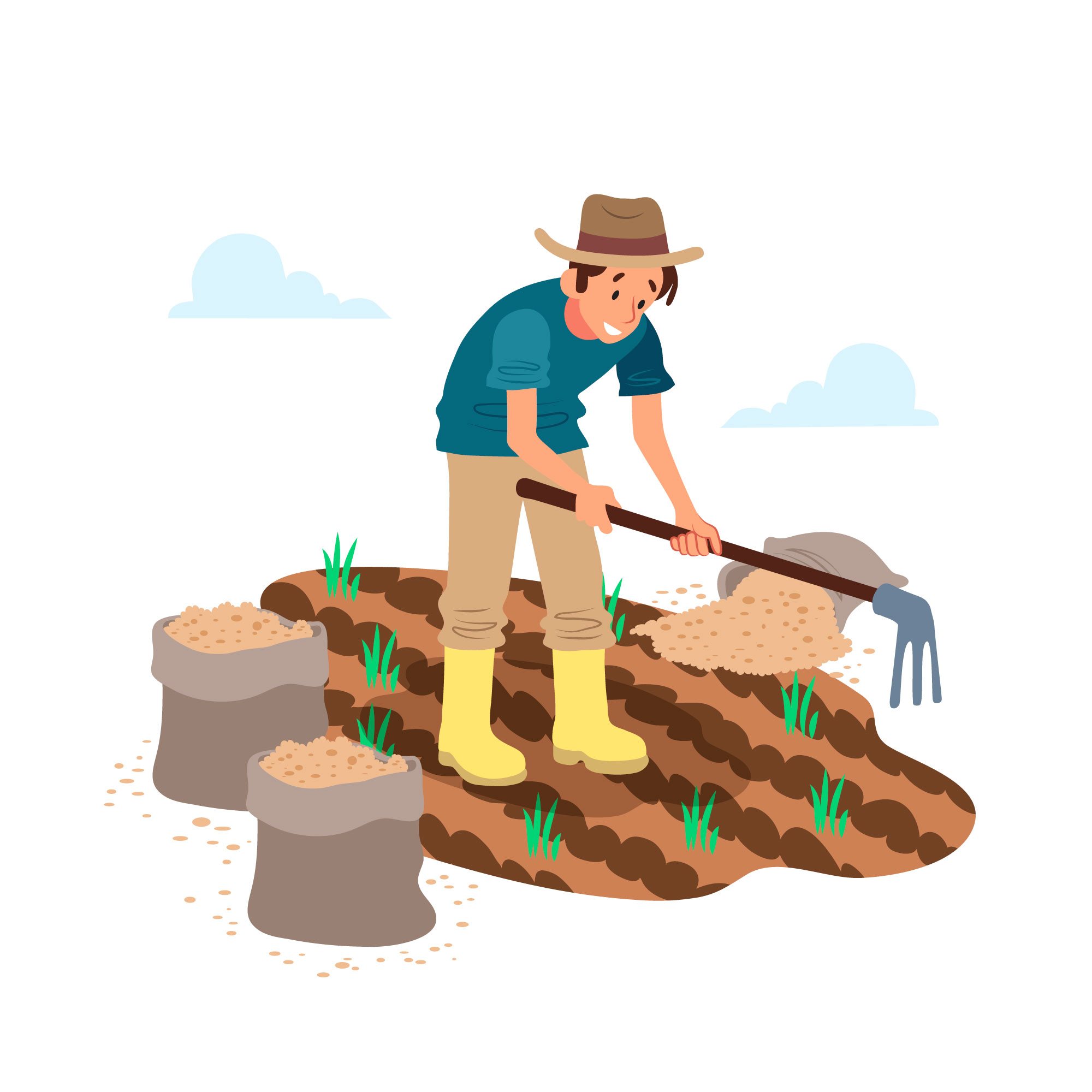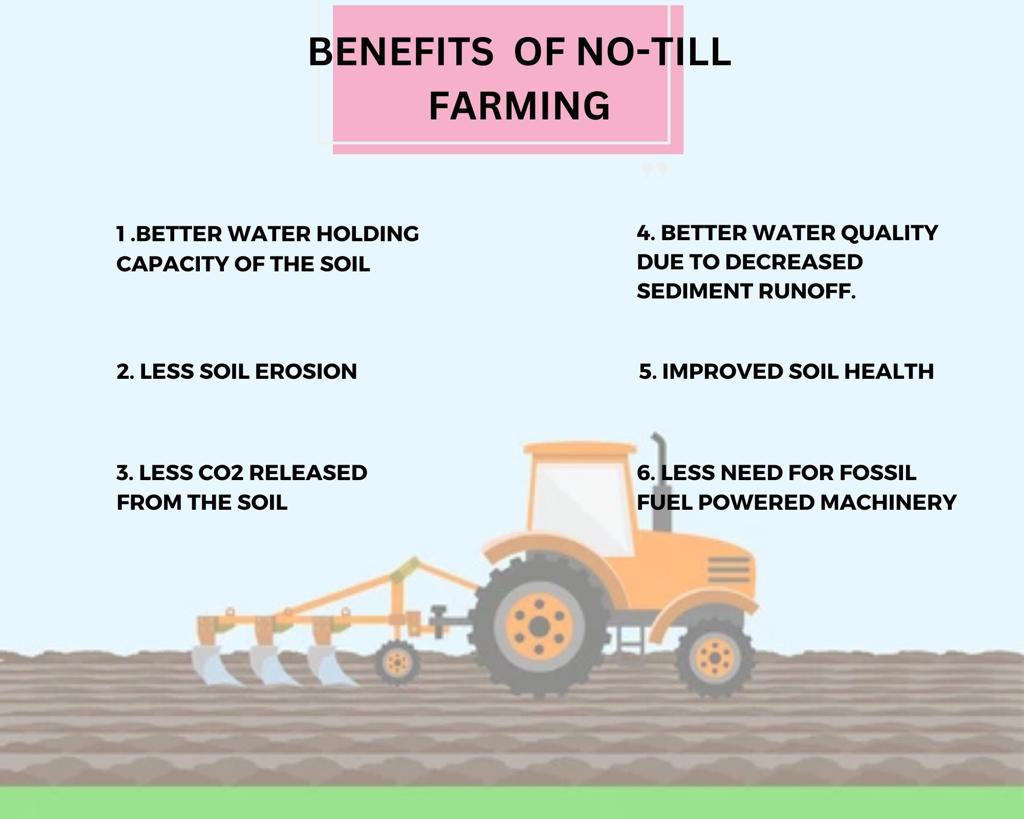Contact: +91 99725 24322 |
Menu
Menu
Quick summary: Discover the Benefits of No-Tillage for Sustainable Agriculture. Explore how this innovative farming practice enhances soil health, reduces erosion, and promotes long-term environmental sustainability. Learn how to implement no-tillage techniques and revolutionize your farming approach for a greener future.

Zero till farming, sometimes referred to as conservation tillage or no-tillage farming, tries to cultivate land with the least amount of disturbance to the soil possible. No tillage farming eliminates or minimizes tilling, in contrast to conventional plowing techniques that require turning and losing the soil.
According to USDA, no tillage farming can reduce soil erosion by up to 90% compared to conventional tillage methods.
In this blog post series, we will delve into the fascinating world of no tillage farming, exploring its principles, techniques, and transformative potential. From small-scale farms to large agricultural enterprises, no till farming has demonstrated its capacity to revolutionize the way we produce food while safeguarding our planet’s future. Join us as we explore to learn more about the complex connections between sustainable agriculture and no tillage farming. Together, we can plant the seeds of transformation and grow a greener, more durable future for future generations.
No till farming also known as zero tillage or direct seeding is an agriculture practice where the soil is left undisturbed or minimally disturbed during the planting process.
No tillage farming preserves the soil’s natural structure and composition by leaving it undisturbed. Crops are simply sown into the soil without turning it over in place of plowing. The preceding crop’s residues are often kept on the surface as a protective layer because they add organic matter, prevent erosion, and help the soil retain moisture.

Soil Health and Conservation: No tillage farming encourages the improvement of soil health
Water Management and Conservation: By lowering water runoff, enhancing water infiltration, and boosting water holding capacity, no tillage farming improves water management and conservation
Carbon Sequestration and Climate Change Mitigation: By increasing soil organic carbon, no till farming reduces climate change by sequestering carbon in the soil
It could be necessary to make an initial investment in specialized machinery and modifications to make the switch to no tillage farming. The price varies according to the operation’s size and the required equipment. Equipment such as no till planters, seed drills, residue management tools, and precision agriculture technology are a few examples. It is crucial to evaluate the financial ramifications and make the necessary preparations for the changeover.
Effective weed management techniques are necessary in no tillage farming since reduced tillage can increase weed pressure. For effective weed control, integrated weed management strategies such as crop rotation, cover crops, and targeted herbicide applications must be used. To stop insect outbreaks and lessen crop loss, proper pest management is crucial in no tillage systems. To keep insect populations under control, integrated pest management (IPM) strategies should be used. These include cultural practices, biological control, and selective use of pesticides where necessary.
A key component of effective no tillage farming is adapting to the local soil and climate conditions. Adapting management practices requires an understanding of the unique features of the soil, such as texture, organic matter content, and nutrient levels. To choose the best crops, planting dates, and irrigation techniques, consider the climate patterns, including temperature, rainfall, and seasonal fluctuations. Local soil testing services and agricultural extension organizations might offer helpful advice for adjusting to the particular conditions of your location.
Trace Gro, the pre-harvest management solution helps to track the sustainable farming practices. Tillage practices are configured as a part of package of practices and tracked efficiently. Any deviations are alerted as notifications thereby enhancing the accountability of practices followed. The solution enables organizations to adopt sustainable tillage practices, optimize resource allocation and improve their overall environmental performance.
In conclusion, no till farming is an effective tool for sustainable agriculture, giving a variety of advantages for improving soil health, managing water resources, protecting biodiversity, and reducing climate change. Although making the switch to no tillage farming may involve careful preparation and investment, the long-term benefits are significant. Farmers may create resilient and fruitful agricultural systems with the least amount of negative environmental impact by embracing no tillage practices and incorporating them with other sustainable agriculture initiatives. Future no tillage farming has a tremendous deal of potential to promote a more resilient and sustainable food production system, which would be advantageous to both farmers and the environment.
